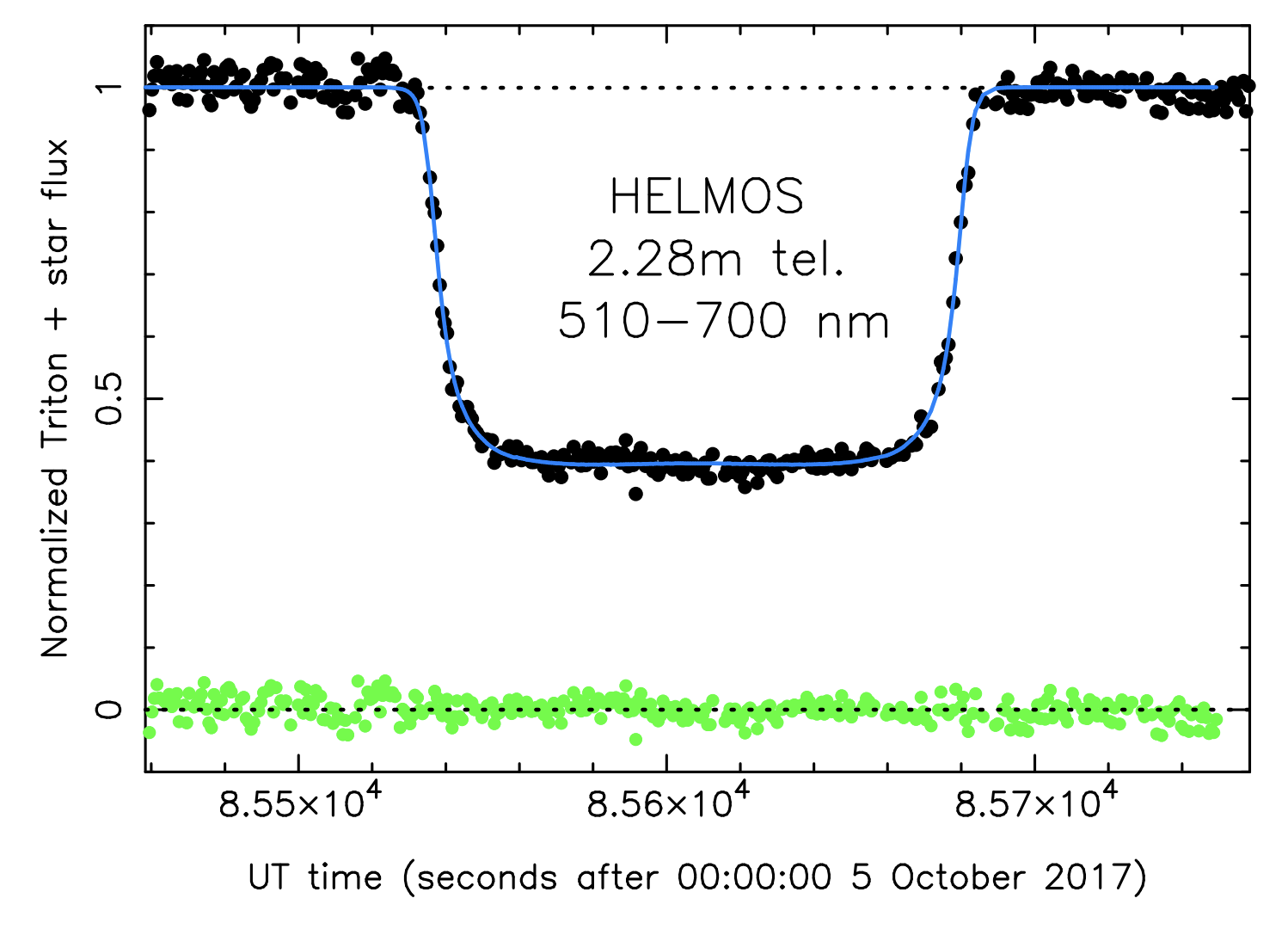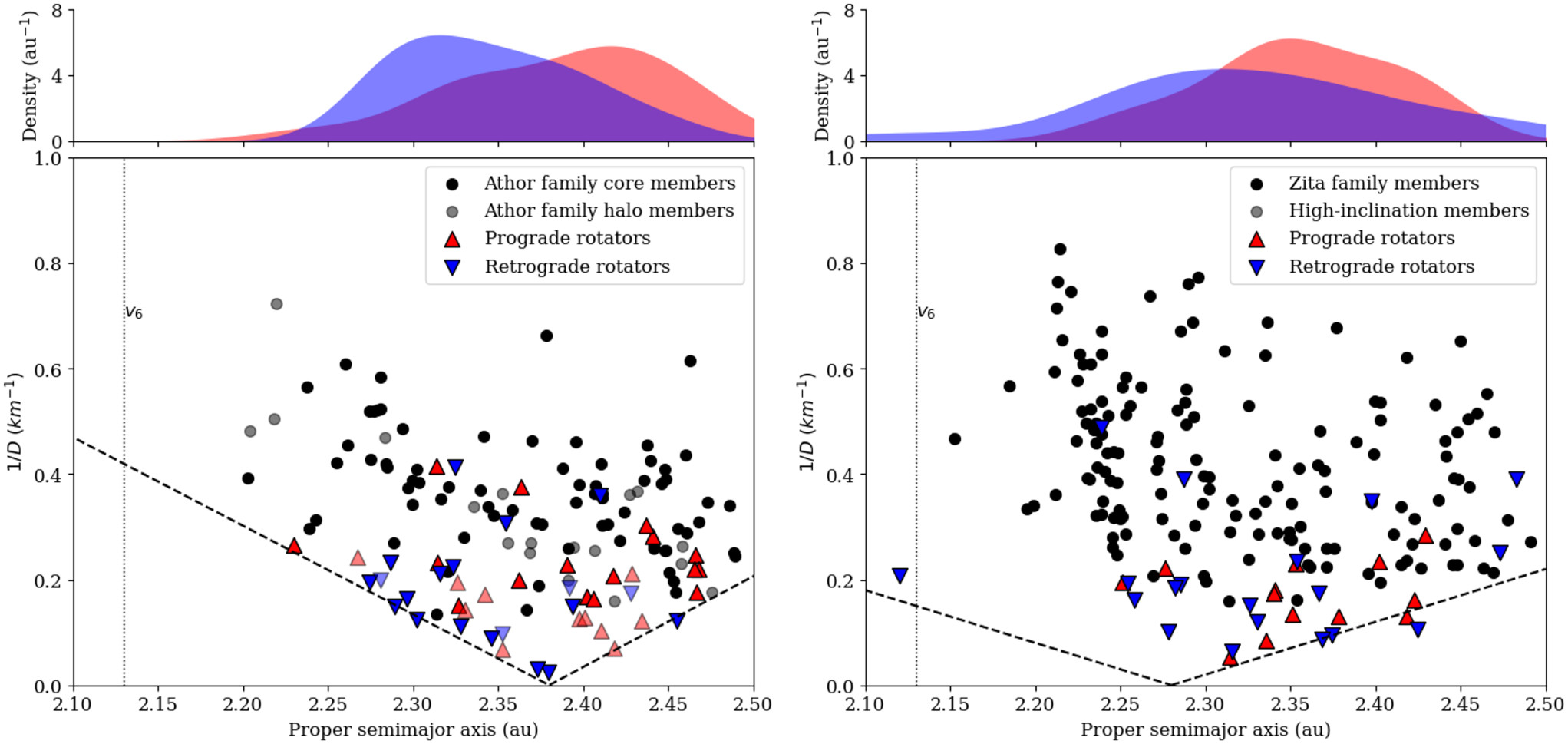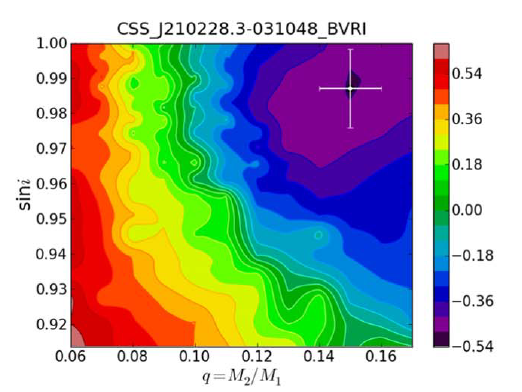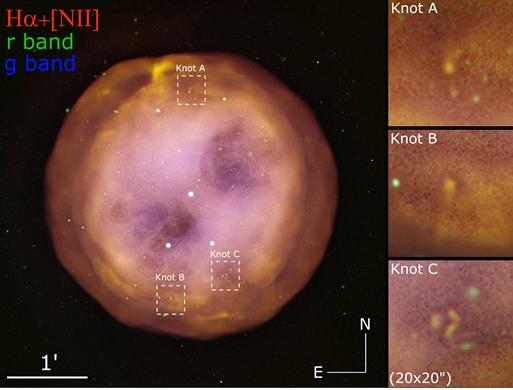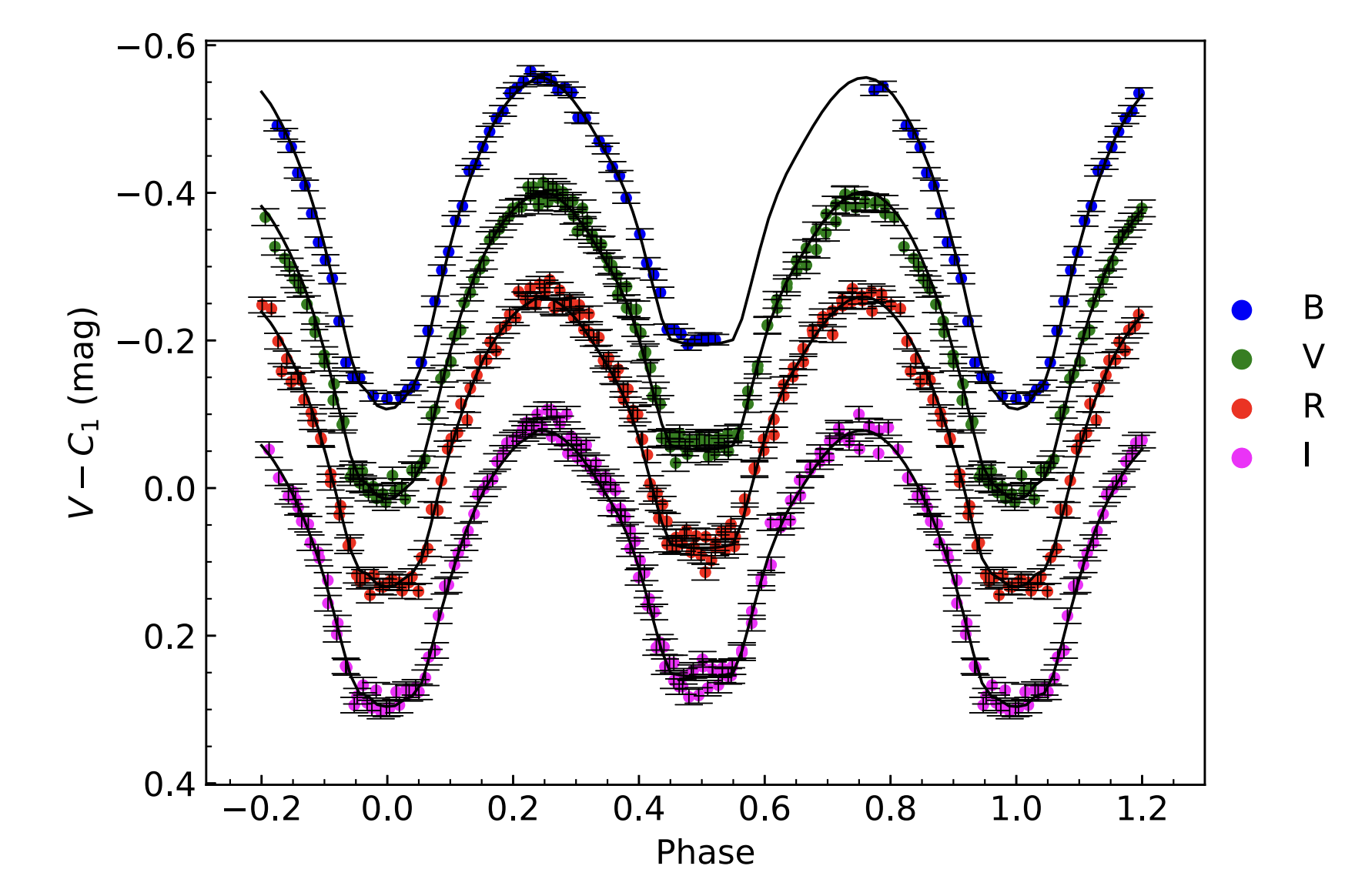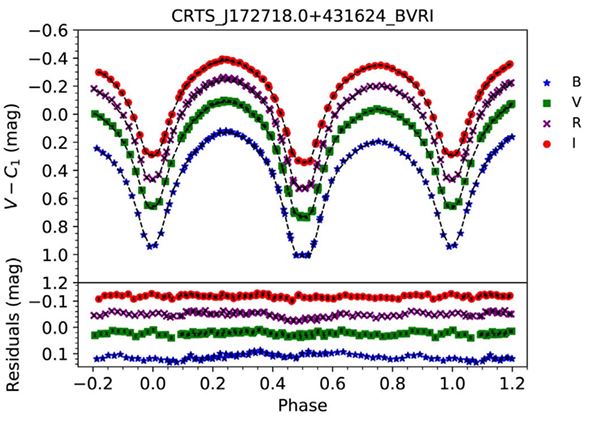Constraints on the structure and seasonal variations of Triton’s atmosphere from the 5 October 2017 stellar occultation and previous observations
Marques Oliveira, J. ; Sicardy, B. ; Gomes-Júnior, A. R. ; Ortiz, J. L. ; Strobel, D. F. ; Bertrand, T. ; Forget, F. ; Lellouch, E. ; Desmars, J. ; Bérard, D. ; Doressoundiram, A. ; Lecacheux, J. ; Leiva, R. ; Meza, E. ; Roques, F. ; Souami, D. ; Widemann, T. ; Santos-Sanz, P. ; Morales, N. ; Duffard, R. ; …
eprint arXiv:2201.10450
January 2022
Abstract
A stellar occultation by Neptune’s main satellite, Triton, was observed on 5 October 2017 from Europe, North Africa, and the USA. We derived 90 light curves from this event, 42 of which yielded a central flash detection. We aimed at constraining Triton’s atmospheric structure and the seasonal variations of its atmospheric pressure since the Voyager 2 epoch (1989). We also derived the shape of the lower atmosphere from central flash analysis. We used Abel inversions and direct ray-tracing code to provide the density, pressure, and temperature profiles in the altitude range ∼ 8 km to ∼ 190 km, corresponding to pressure levels from 9 {\mu}bar down to a few nanobars. Results. (i) A pressure of 1.18 ± 0.03 {\mu}bar is found at a reference radius of 1400 km (47 km altitude). (ii) A new analysis of the Voyager 2 radio science occultation shows that this is consistent with an extrapolation of pressure down to the surface pressure obtained in 1989. (iii) A survey of occultations obtained between 1989 and 2017 suggests that an enhancement in surface pressure as reported during the 1990s might be real, but debatable, due to very few high S/N light curves and data accessible for reanalysis. The volatile transport model analysed supports a moderate increase in surface pressure, with a maximum value around 2005-2015 no higher than 23 {\mu}bar. The pressures observed in 1995-1997 and 2017 appear mutually inconsistent with the volatile transport model presented here. (iv) The central flash structure does not show evidence of an atmospheric distortion. We find an upper limit of 0.0011 for the apparent oblateness of the atmosphere near the 8 km altitude.

